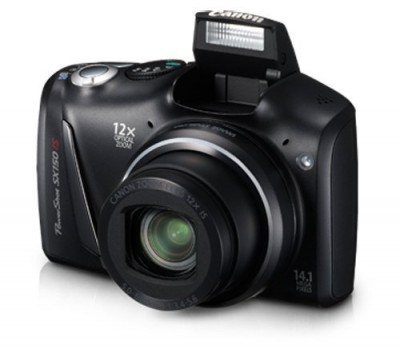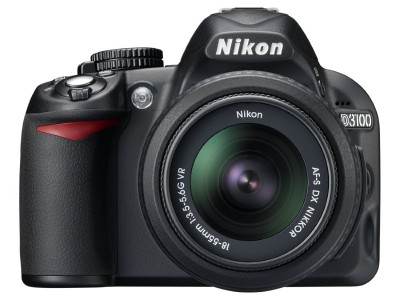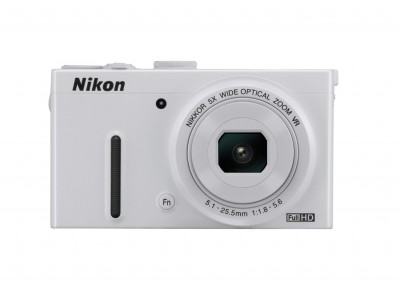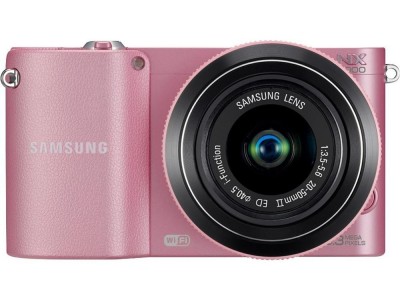I had my old camera for a while. It was a Canon SX100IS. It had a really nice zoom lens (10x), took nice pictures (8 megapixels or MP), and had a lot of neat features. One of the features was a panorama assist mode where it would help you take panorama pictures by showing you the edge of the previous picture so that you could line things up using the screen to get enough overlap between pictures. When I lost that camera this year, I wanted to get something similar. Jeb had gotten one in that series as well, but it was maybe a SX130. When I went shopping there was a SX160 out, but the SX150 was cheaper, so I got it, surprised it was only about $115. It had a little more zoom power (12x) and took higher resolution photos (14 MP). It uses 2 AA batteries, meaning I can have plenty of backups available and they don’t require a special charger or overpriced replacements. I’ve had that camera for several months now and took it on my trip out west where I really put it to work.
However, the new camera isn’t quite the same, which maybe isn’t surprising since it was about half the price. It lost the panoramic stitch feature (which I missed out west, trying to do it a couple of times without assistance and not getting any usable results; one other trick is to make sure the exposure settings are locked so that all the pictures have the same exposure). Also I had a hard time getting the exposure to work out right and found I was needing to tweak it constantly, trying to get it just a little darker or a little lighter to get a good result. I still managed to get some good pictures. Also, conditions were challenging with overcast skies most of the time and a lot of pictures taken late in the day without a lot of light, which is a challenge for any camera. But one time I was taking a picture of a lake that looked pretty green to me and it came out brown. I knew I could do better than this.
One of my gripes about the new camera was the noise introduced in lower light situations. Most compact digital cameras have the same problem. They are using smaller lenses that can’t capture a lot of light and they have a very small photo sensor inside. I mean very small. They measure them in fractions of an inch like 1/2.3″ which comes out to only 6.2mm x 4.6 mm (not sure why, since 1/2.3 inches is more than 6.2mm). The old film cameras had a sensor that was 35mm across (a frame of film). Also the budget cameras have a CCD sensor instead of the better CMOS sensors. I don’t know what that means, but you want CMOS. A lot of full size cameras (DSLR) use a APS-C size which is 23.6mm wide (30 times the size of the chip in my camera). The bigger lens and sensor allow them to take good pictures with lower levels of light.
In order to get a better picture in low light conditions, the lens might stay open for a longer exposure, but this makes the picture sensitive to shaking as you try to hold the camera steady. You can get a tripod (which the pros do), but another solution is image stabilization where the camera corrects for the movement (physically unshaking the lens or camera somehow). This allows you to take good pictures at even lower light. So you need a big lens, big sensor and image stabilization. But the full size cameras are expensive, about $500 and way up from there. They are also kind of heavy even though they are lighter than they used to be. And most come with lenses that aren’t that great at zooming, maybe a 3x zoom or so. You can buy additional lenses but they are very expensive. Not just for the optics, but they also have autofocus lenses and image stabilization along with zooming controlled by the camera that increase the cost quite a bit. A good lens can easily cost $200, and really good ones are $500 and up. Still, I wouldn’t mind getting a DSLR camera if that’s what it takes to get significantly better pictures. I found the Nikon D3100 for about $450 including a 3x zoom lens with image stabilization (although there is a newer D3200 out with twice the resolution). This is the low end of Nikon’s DSLR cameras, with D5100, D7200, and then D700’s all being higher up in price. You could get a bundle with the D3100 and a non stabilized 3x zoom and a non stabilized 10x zoom for $500. For $600, you could get those two lenses but with stabilization. A lens that covers a nice range of 18-200 mm is about $800 by itself.
But there are also new features out there. I think some of the demand for features is coming from people with iPhones which a lot of people are using as their camera. The iPhone has built-in GPS, lets you share pictures over the internet, and so on, because it is combining a computer, phone, and camera in one device. So now some cameras have GPS. GPS is kind of a neat feature because it tags where a picture was taken. It could be really good for some jobs where maybe you go out and take pictures of things (houses, potholes, ne’er-do-wells) and need to know where it was taken later. For personal use it could be helpful on a road trip, especially if you wait a while to do anything with your pictures, or if they get jumbled up somehow. Since people are lazy about organizing their pictures, there are some great features now that automatically organize pictures not just by date, but can learn who people are in the pictures and automatically tag them, plus if the location information is there, that is another way to automatically tag and sort pictures. Kind of neat, kind of unnecessary.
Another feature is wi-fi, so that you can easily transfer pictures. I don’t have a problem (in fact I prefer) taking the card out, and then sticking it in the computer and dragging the pictures off the card. I like this better than installing some lame, bloated camera software on the computer then hooking up the camera to the computer via a cable and importing the pictures. With wi-fi, it can be done without a cable and you can quickly share a picture on Facebook or Instagram via apps for iPhone or Android. Again, kind of neat, pretty much unnecessary.
There are other features that relate more to the camera itself. One is call HDR which takes several pictures very quickly at different exposures and then overlays them using the best results from each. Parts of the picture in bright sunlight won’t be overexposed and parts in shadows won’t be underexposed. That could be a pretty useful feature since a lot of times I am wrestling with getting a good picture of the bright sky along with whatever is on the ground that may not be as bright. They can try to deal with noise in pictures the same way, taking several pictures and filtering out the noise (weird color speckles that show up in the image). Another way of getting rid of noise is to use software that can manipulate RAW files, which are files that contain all of the information from the photosensor, not just the resulting jpeg image. Pros swear by RAW files and won’t accept anything that won’t produce them. Apparently the image that ends up on the photo sensor can be quite distorted, but the camera software converts it into an undistorted image. That way you don’t have to have optics that produce perfectly shaped rectangles. I’m not sure I want to deal with RAW images since the file sizes are huge and it requires special software to manipulate everything. RAW images also tend to slow down performance of the camera as it writes all that extra data to the memory card.
Even panoramas have gotten better. On the old camera the assist would produce several pictures helping me to get the right amount of overlap and then on the computer I would use a piece of Canon software to stitch them together. Now some cameras can do this on their own. And in fact, they can do the overlapping on their own as well, allowing you to pan the horizon, while the camera takes pictures at the appropriate interval to stitch once you are done panning. The problem with panorama pictures is what to do with them. They don’t fit on a computer screen and they are hard to print and frame (I’m looking for a good deal on some wide frames for some of my panorama shots). But they are pretty cool, giving you almost a virtual reality look as you scroll through the picture.
Some cameras are even set up to take 3D pictures. I’m not sure how that works since that usually requires two pictures taken from slightly different angles, just as your eyes see things from slightly different angles to get depth perception. Maybe you take the picture twice (actually I found out later that they take two pictures, blocking out part of the image each time which somehow produces 3D; maybe they are using the focus sensor to help as well). Then I’m not sure how you would view the pictures, though they do have 3D TV’s now. I guess you could wear 3D glasses and watch them on your computer screen.
Another feature that more people are using their cameras for is movies. Now people are only interested in HD movies, which includes 720p (my current camera does 720p, the old one did 480p which is equivalent to a DVD), but now just about everyone wants 1080p and most TV’s are 1080p now (smaller HDTV’s are usually 720p still). And while the sampling rate on TV is 30 frames per second (fps), people want higher frame rates so they can then apply slow motion (The Nikon J1 can shoot at 1200 fps, meaning you could slow it down to 1/40th speed slow mo). Also some cameras advertise 24p which seems to just be 24 fps, like they use in the movies, but it would then have to be converted to 30 fps for video, so I’m not sure I see the point. There are definitely times when a movie is just better than a still picture could possibly be, but I’m not sure what you do with movies, so this isn’t a feature I really need, though I am happy to have it.
I read about a compact camera the Nikon Coolpix P330 which was supposed to be good at taking low light pictures and had a lot of neat features like GPS and panoramas. It is about $330. It has a somewhat bigger sensor (7.4mm vs. 6.2mm on my camera and it is CMOS instead of CCD) and wider aperture of f/1.8. A step up was the Nikon P520 which has amazing 42x zoom and a flip out screen so that you can see the screen even when the camera is in a weird location or even when you point it at yourself, but it has a smaller sensor and aperture. The Nikon P7700 is a higher end version of the P330 with a flip out screen and the same sensor, but adds in-camera panoramas and HDR overlapping.
While spending most of the weekend researching all of this, I found some good photography websites. One is dpreview.com which seems mostly geared towards higher end products (I doubt I’ll ever be buying $2,000 cameras, but it is a good site even for entry level DSLR’s and high end compact cameras). Another lets you compare sizes of different cameras (camerasize.com). And another lets you compare two cameras by their features (snapsort.com) and makes a recommendation on how the two compare (really helpful site and includes key information like sensor size). Things like picture quality seem subjective, but it gets those ratings from a website that does that (DxOMark). The amount of noise is also subjective, so while a camera may advertise being able to take pictures at very high ISO levels, that doesn’t mean they will look decent. That’s where I had a hard time making a decision, but snapsort.com helped by letting me compare the compact cameras to the DSLR’s where I saw that the DSLR’s were comfortably going to an ISO of 900 whereas the any of the compact cameras, even the ones supposed to be good with low light like the P330, were getting noise at 219 (other compacts were around 170). There is no contest when it comes to low light.
A SLR camera is a single lens reflex camera (DSLR is just a digital version). It has a viewfinder where you look through an optic in the top and down to a mirror and out the lens of the camera. This lets you see what the film (or photo sensor) will see. Then when you take a picture the mirror flips out of the way and the light goes to the photo sensor. You hear that mechanism when it takes a picture. While my old camera had a viewfinder (not looking through the lens, so it is an external viewfinder), most compact cameras now don’t even have a viewfinder, including my new one. Instead you look at the LCD screen on the back to frame your picture (and that image is taken through the lens). I didn’t like that at first, but the LCD screens have gotten bigger and better and I am used to it now. It’s really easier than squeezing your eye up to a viewfinder and getting nose prints on the screen. It may not work that well looking at a screen in really bright sunshine or when it is pretty dark though.
Anyway, now they have cameras that use the same sensor as a DSLR, but they don’t have a mirror and viewfinder. Instead you just use the screen on back (some might have an external viewfinder). These are significantly more compact, though they all seem to have removable lenses (I think this may relate to the larger sensor size, which requires a larger lens, unless it is a non-zoom lens which is pretty compact). The prices of mirrorless cameras can still be kind of high, with Sony cameras up around $800. And the lens included with most of these cameras is still only 2.5x to 3x. But I found a Nikon J2 that was reasonable, a Canon EOS M, Panasonic G5, and a Samsung NX1000. The Samsung seemed similar to the Canon but while Canon charges $100 for a flash unit that isn’t included, Samsung throws one in. The Canon can use lenses for Rebel cameras, but you have to buy a $100 adapter ring. Without the adapter ring, there are 4 lenses that fit on the Canon. Neither have very good zoom lenses included, only 3X and no image stabilization, though at 3X, maybe that isn’t necessary. It seems like photographers use tripods a lot to compensate for low light. I’m not sure you can even control the zoom from the camera like you do with a compact but may have to manually move a ring on the lens to adjust the zoom. They do seem able to autofocus, which is a big plus. At any rate, any of these should outperform normal compact cameras: the NX1000’s sensor is 30 times the size of the sensor in the P330, which in turn is bigger than what is in my new camera.
I was really wavering with all of the choices. I could get the Nikon D3100 DSLR camera and two vibration reduction lenses for $600, but it lacks HDR and panoramas and is pretty bulky.
Or I could get a mirrorless camera like the Samsung NX1000 for about $300, but the lens makes it a little bulkier and I would have to buy an even bigger lens to get 10x zoom for another $230, making the total price close to the D3100 with its two lenses. But it does have some neat features like HDR, panoramas, and wifi (no GPS). Or the Canon EOS M, but it requires an expensive adapter and you have to buy the $100 flash attachment separately.
Then there are some compact camera choices that have better than average low light capabilities. The Nikon Coolpix P330 has a 5x zoom and 12MP resolution, plus GPS and should pretty much beat my current camera in every way. It is $329, but there is nothing else to buy except maybe additional batteries (hardly any of the cameras use AA batteries anymore, so you end up buying special lithium ion packs, though generics seem to be available). A similar camera from Canon is the S110 and the somewhat more expensive G15 both of which Snapsort ranks top in their price categories even though neither are quite as good in low light as the P330.
In the end the winner for me was the Samsung NX1000. I liked all the features and the only real downside was the lack of good zoom (and no GPS). But I will still have the 12x zoom of my Canon SX150. Also, while the Canon says it is 14.1 megapixels, it is really only rated at 9.8 effective megapixels, so the Samsung has twice the resolution, effectively doubling the zoom power digitally. I’ll do a comparison of both cameras zoomed all the way out and see how they do. I never feel real good about zooming all the way out with the Canon because I know the image quality will suffer (and a reason I stayed away from the 42x zoom Nikon P520). The only remaining question was color. The Samsung comes in conventional black, white, and pink. Right now the black is a little cheaper than the other two, so that’s what I got. Good thing the pink wasn’t cheaper because then I would have to make a hard decision and I’m just cheap enough to use a pink camera.





re: “and getting nose prints on the screen”
It occurred to me that if the camera can communicate with a smart phone, maybe it could just get the GPS data from the phone instead of requiring a separate GPS receiver. Samsung sells a GPS receiver that fits in the “hot shoe” for the flash, but it is kind of bulky and expensive at $200. Camera shipped yesterday and is supposed to be here tomorrow!
I got the camera yesterday and have started playing around with it. There is an app for Android and iPhone that lets you transfer pictures from the camera over wi-fi to the smartphone (or iPod or Nexus 7, in my case). Another neat feature is the “remote viewfinder” which shows you the camera’s screen on your iPod and lets you use the iPod as a remote to take pictures and adjust a few camera settings. While the NX1000 doesn’t have a flip-out screen, with the remote viewfinder you essentially have a removable screen, which is even better, though more cumbersome since you have to get the iPod out, make the wi-fi connection to the camera, open the app, then accept the connection on the camera.